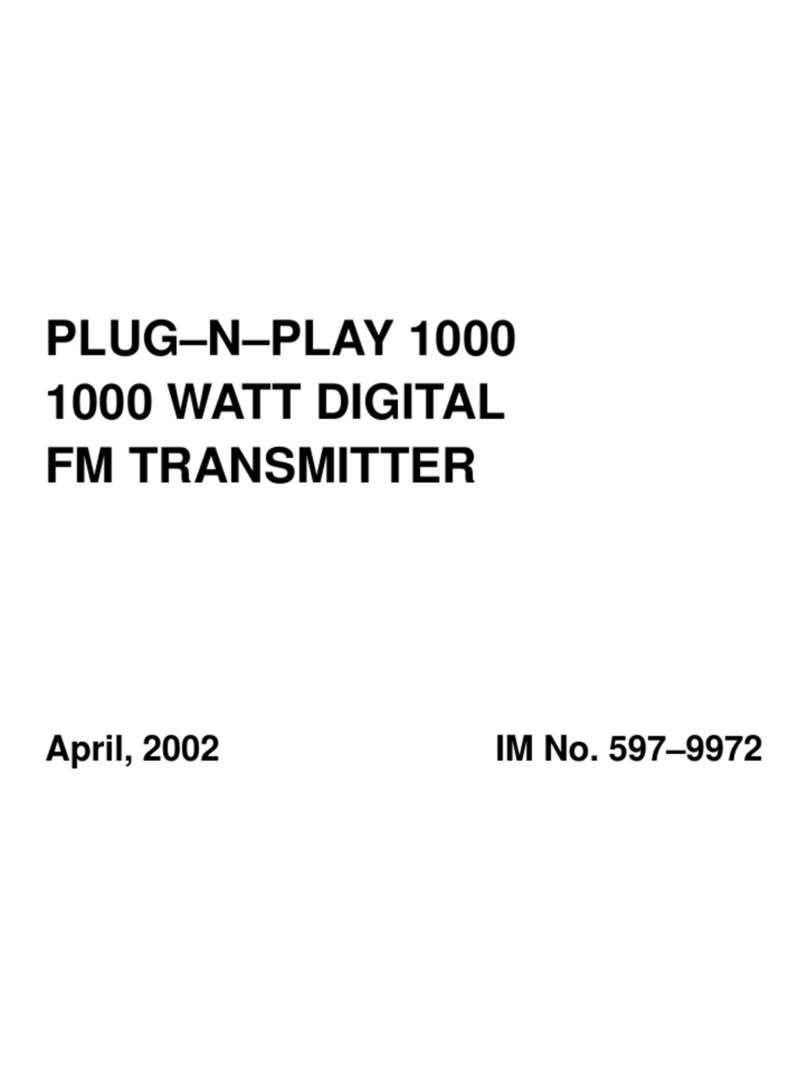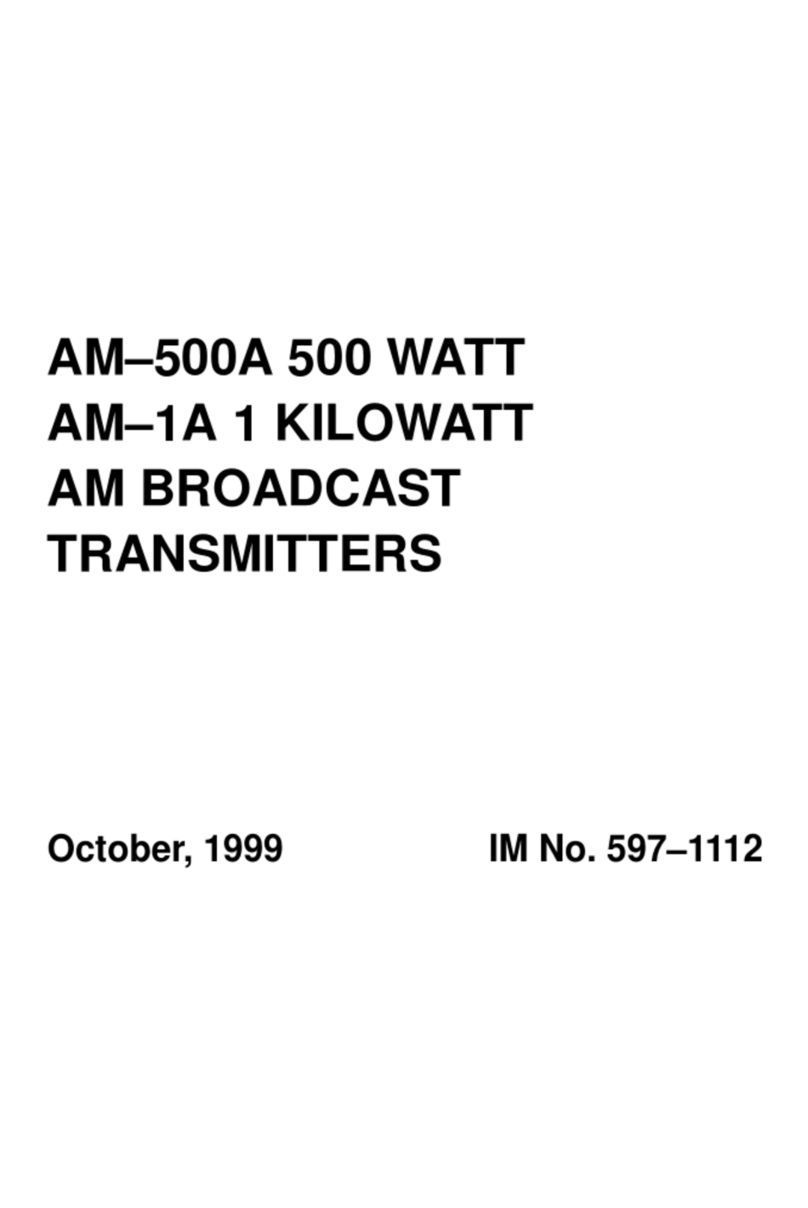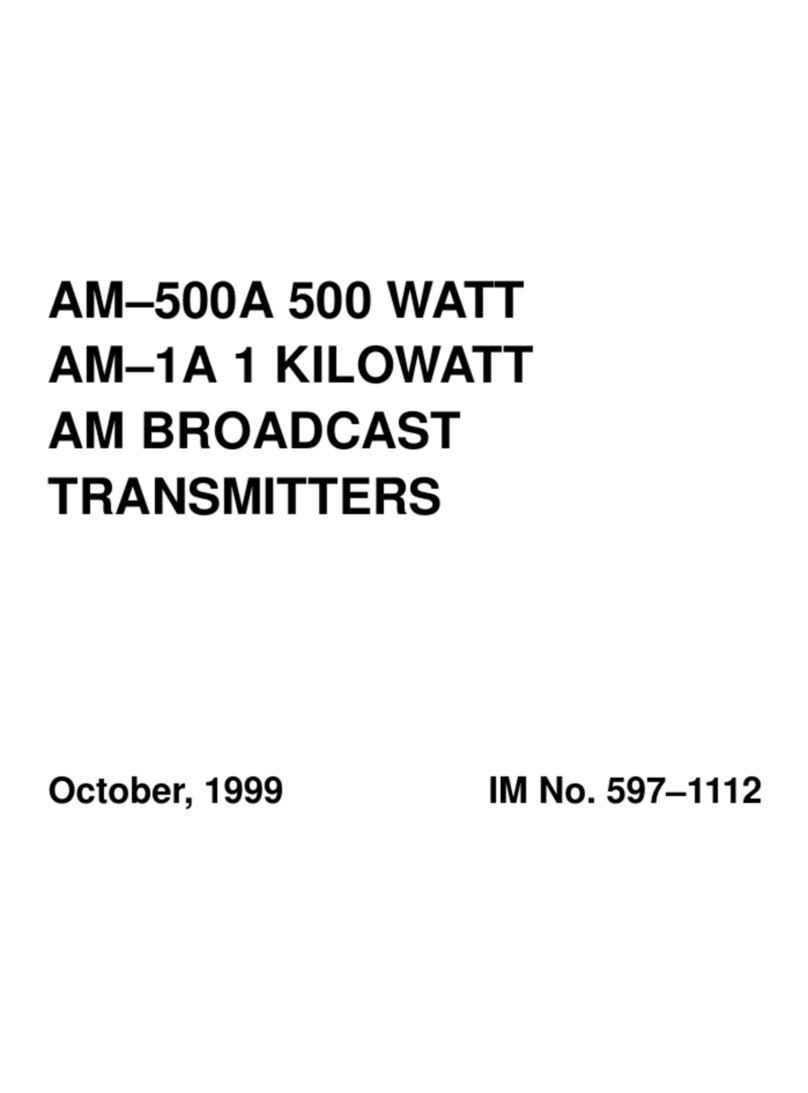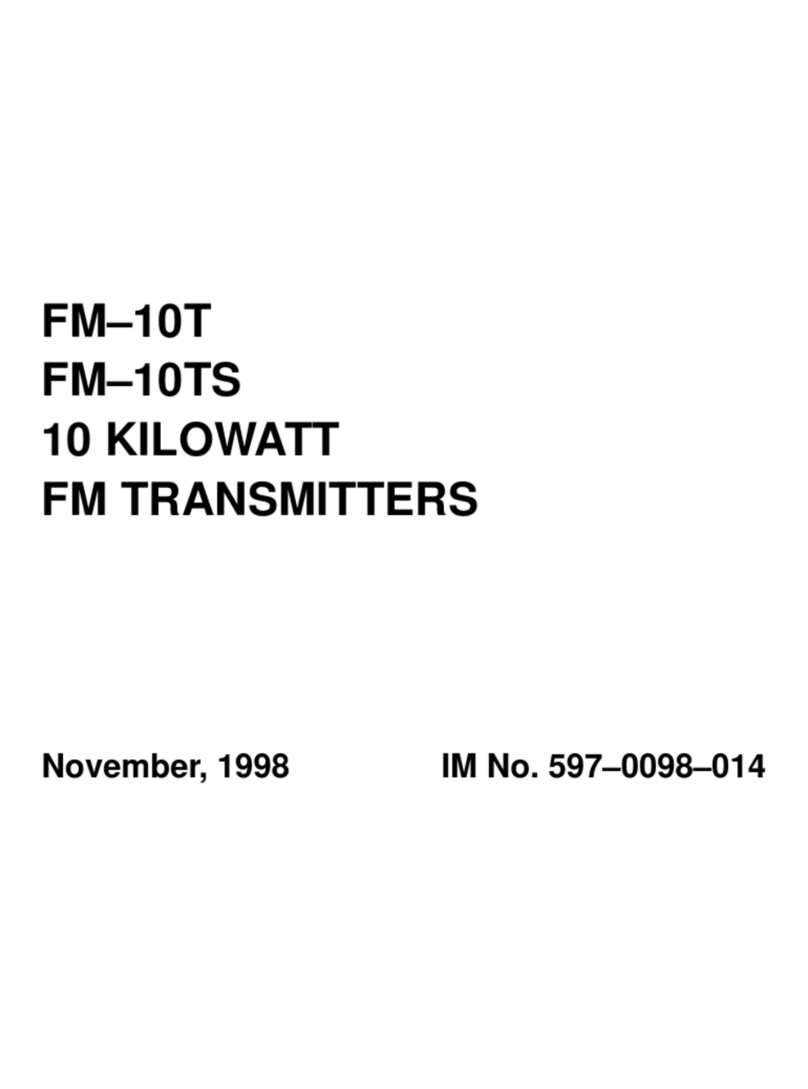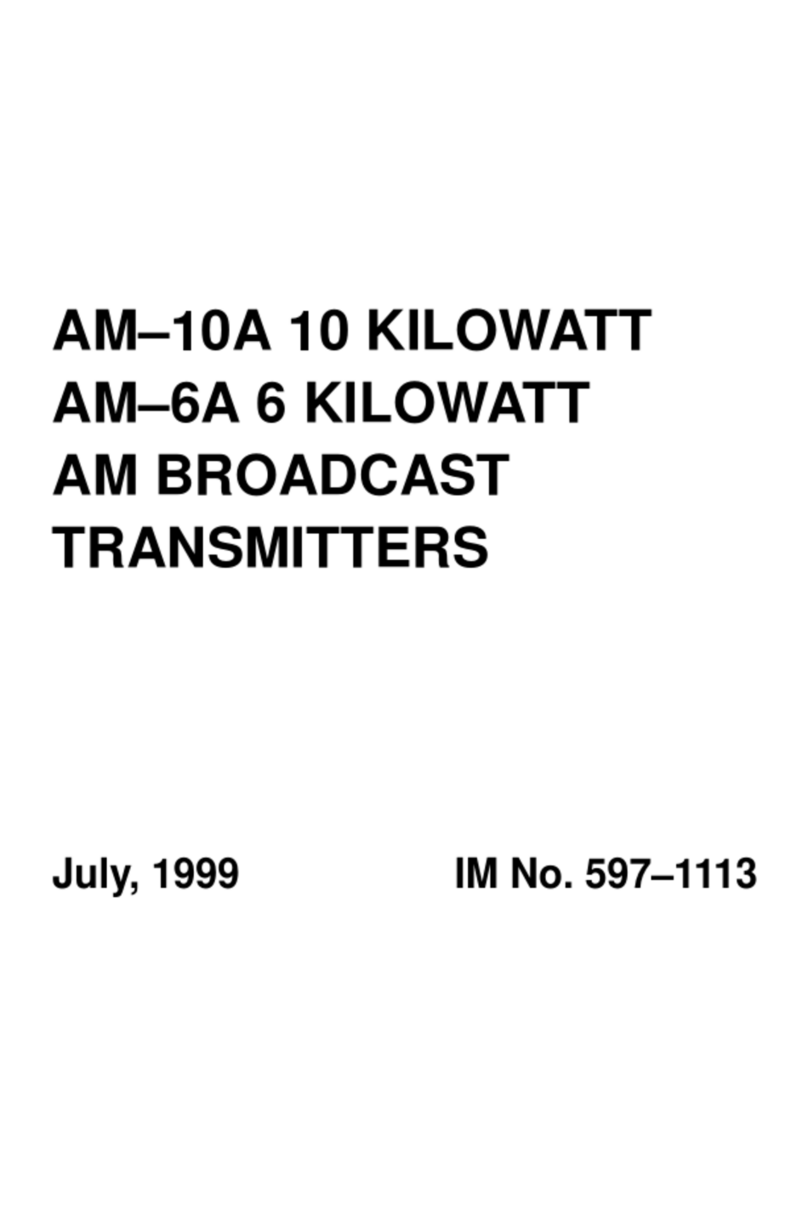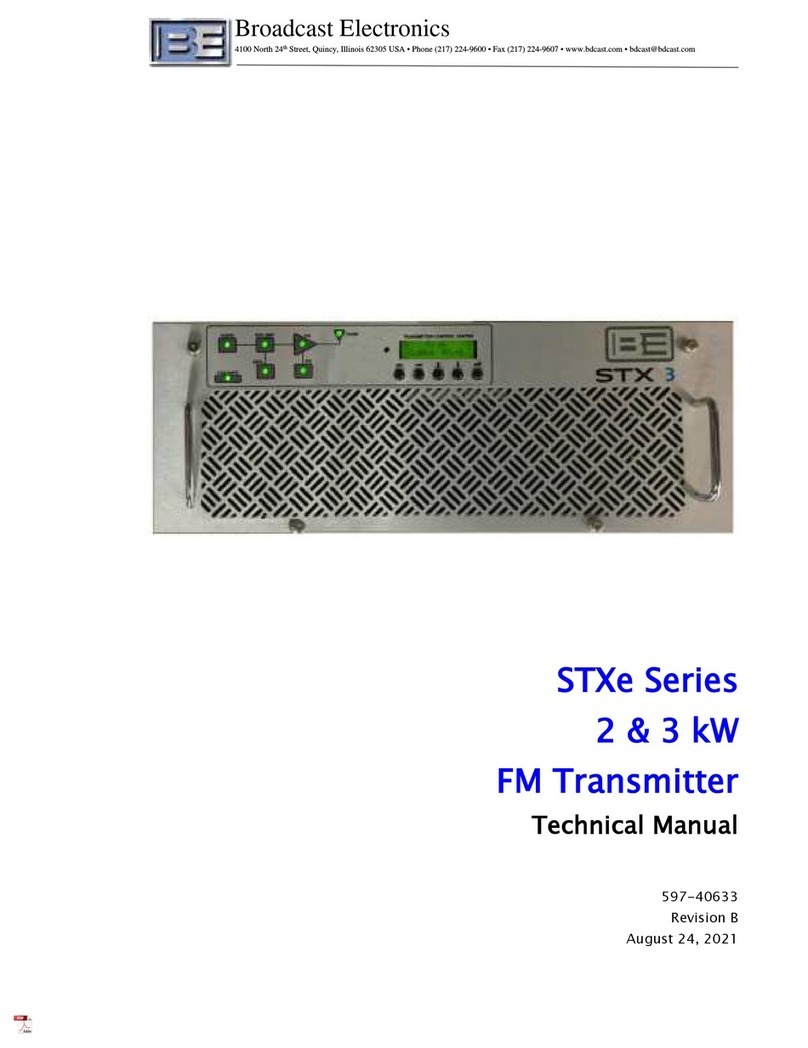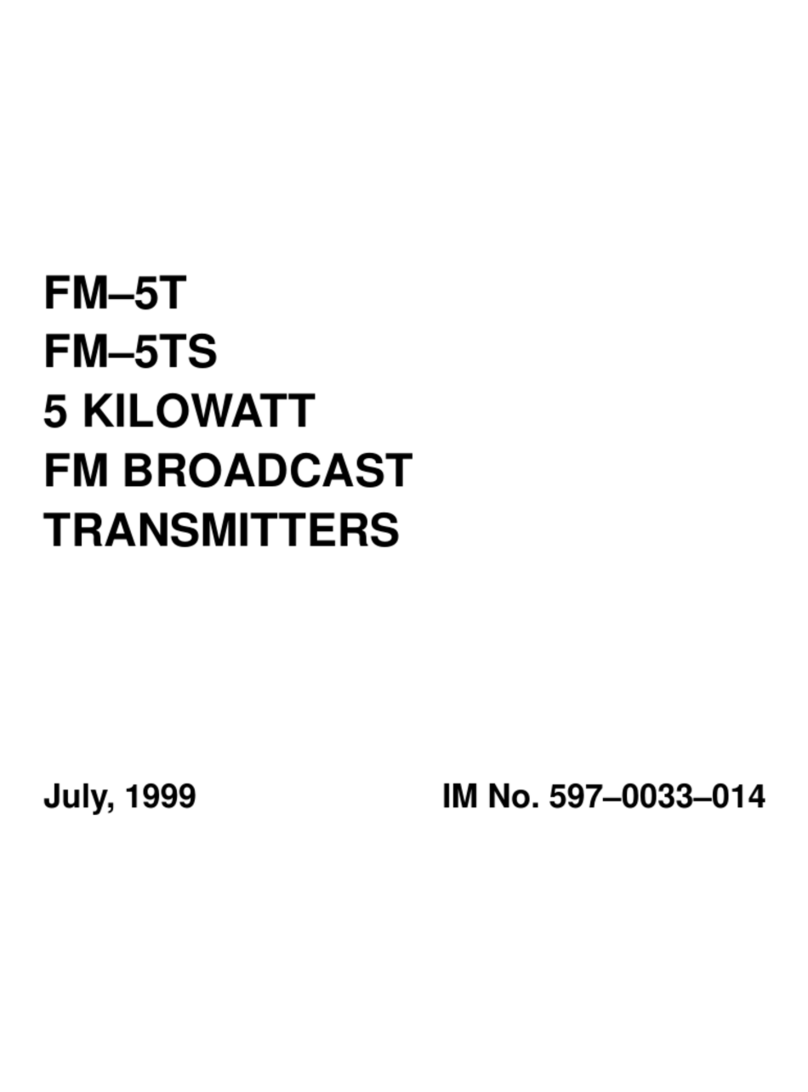
i
©2011 Broadcast Electronics
Broadcast Electronics
Product Warranty (Two-Year Limited)
BE hereby warrants all new products manufactured by BE against any defects in material or
workmanship at the time of delivery thereof, or that develop under normal use within a period of
two (2) years from the date of shipment.
BE reserves the right to repair equipment under warranty with new or refurbished equipment or
parts. BE’s sole responsibility with respect to any equipment or parts not conforming to this
warranty is to replace or repair such equipment upon the return thereof F.O.B. to BE’s factory in
Quincy, Illinois, U.S.A. In the event of replacement pursuant to the foregoing warranty, only the
unexpired portion of the warranty from the time of the original purchase will remain in effect for
any such replacement.
This warranty shall exclude the following products, component parts and/or assemblies:
(a) Transmitter power output tubes shall only carry the original manufacturers’ or suppliers’
standard warranty in effect on their original shipment date.
(b) All computers, computer peripherals, cables, hard disk drives, etc., shall only carry the
manufacturers’ or suppliers’ standard warranty in effect on their original shipment date.
(c) “Components”, defined as separate and individual parts (e.g. transistors, integrated
circuits, capacitors, resistors, inductors, fans, etc), resold by BE from another manufacturer
or supplier, shall only carry a 90 day warranty, effective the date of shipment. Any such
‘Components’ being returned for warranty claim must be (1) returned in their original
packaging and (2) must be in new, unused condition.
BE is unable to process or resolve component defects or performance concerns on
components that have been soldered, installed, wired or in any way altered from new their
new condition.
(d) “Resale Equipment”, defined as equipment purchased from another manufacturer or
supplier, then resold by BE, shall only carry such manufacturers’ or suppliers’ standard
warranty in effect as of the original shipment date. All warranty claims against any and all
‘resale equipment’ sold by BE must be filed directly with the original equipment
manufacturer. BE is unable to process or resolve equipment defects or performance
concerns on products or services not manufactured by BE.
This warranty shall not extend to claims resulting from any acts of God, terrorism, war, defects or
failures caused by Purchaser or user abuse or misuse, operator error, or unauthorized attempts to
repair or alter the equipment in any way.
Under no circumstances shall BE be responsible for indirect, incidental or consequential damages,
including, but not limited to transportation costs, non-authorized repair or service costs, downtime
costs, costs for substituting equipment or loss of anticipated profits or revenue incurred by
Purchaser, whether based in contract, tort or for negligence or breach of statutory duty or
otherwise.
The terms of the foregoing warranty shall be null and void if the equipment has been altered or
repaired without specific written authorization from BE, or if not installed according to BE’s
instruction manuals including, but not limited to, the absence of proper grounding, surge (TVSS)
protection on the AC circuit panel or proper lightning protection/grounding on all output circuits,
or if equipment is operated under environmental conditions or circumstances other than those
specifically described in BE’s product literature or instruction manual which accompany the
equipment. The warranty shall be voided if the product or subassembly is equipped with a tamper
seal and that tamper seal is broken. BE shall not be liable for any expense of any nature
whatsoever incurred by the original user without prior written consent of BE.

